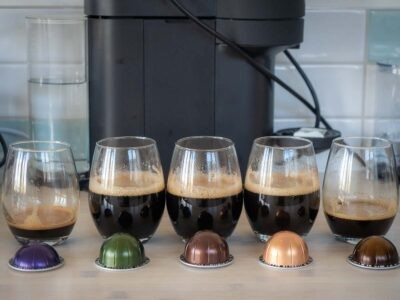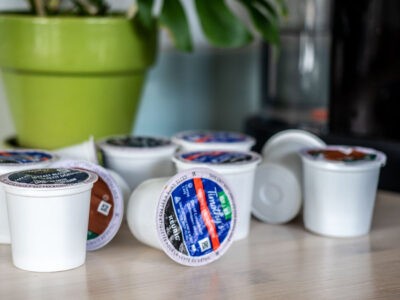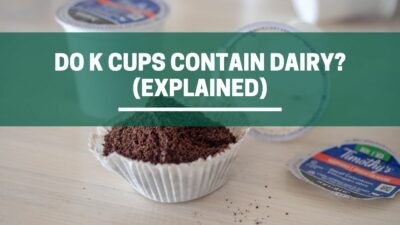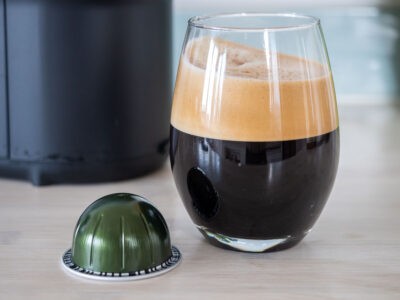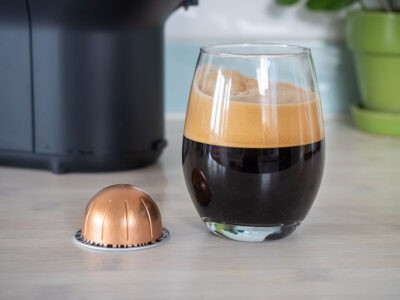Keurig Guides, Keurig Machines
5 Tips To Fix Keurig Slow Drip (Try This)
Having a slow-dripping Keurig can be frustrating. One minute it’s producing a continuous flow, the next, it just dribbles.
This predicament alone is enough to set your morning off to an awful start.
But worry not!
It’s not the end of your machine, and it certainly doesn’t warrant repairs. You can fix these issues with a few DIY tips and tricks.
In this article, we’ll provide our step-by-step guide to fix the slow drip so you can go back to enjoying your cup of coffee.
Why Listen To Us? Well, because we KNOW coffee! In fact, we make our own coffee, coffee machine cleaners, and reusable capsules which we've sold to over 41 countries. Our team ouf experts include Tristan (an engineer), Claire (a food writer) and Richy (a barista). So, whether you're looking for a recipe or repair guide, we've got you covered 💚
Table of Contents
Is Your Keurig Dripping Too Slowly?
First of all, it’s important to understand that Keurig machines are SLOW. They aren’t like a Nespresso machine that makes coffee in 20 seconds..
Keurig machines can take anywhere from 2 – 4 minutes when operating normally. Typically 45 seconds to heat up and then 1 minute to brew.
If your machine takes longer than this, then you may have a slow drip problem.
Fortunately, you can often easily fix this yourself. When your brewer drips too slowly, it’s due to one of the following reasons:
- The need to descale.
- Coffee residue in the needle.
- Worn out water filter.
- Faulty or damaged K-Cup
- Worst case scenario: damaged water pump.
We’ll share how to fix each of these below.
5 Tips To Fix A Keurig Slow Drip
A slow drip can be due to a clogged nozzle, an overdue descale, or a water filter that’s long past its replacement time. Here are the common causes of a slow drip and how to fix them.
1. Blocked water tank – Replace the water filter
After several uses, the water filter does lose its efficacy.
Not only does the filter become weaker, but calcium buildup does lurk around the filter, blocking the flow of water.
In this case, it’s best to replace the filter.
Keurig recommends you change the cartridges every two months.
Here’s a step-by-step guide to replacing the water filter.
You’ll need:
- A cup
- Keurig water filter handle
- Keurig water filter cartridge
Instructions
- Soak the cartridge in a cup filled with clean water.
- Rinse the cartridge under running water for 60 seconds.
- Rinse the short handle under running water.
- Place the cartridge onto the short handle mesh.
- Attach the long handle to the short handle.
- Insert the water filter into the water tank. When you hear a snap, the filer is securely in place.
2. Clogged pipework – Descale
Descaling your machine is a crucial part of cleaning your brewer.
It removes scale build-up that can hinder the performance of your appliance.
Apart from a slow drip, you’ll know it’s time to descale your device when your coffee doesn’t taste as good as it used to or when you pick up hints of previous brews.
Keurig recommends descaling your appliance every three to six months.
Here’s how to descale your machine.
You’ll need:
- 12 oz (350ml) ceramic mug
- Keurig descaling solution
- Clean water
Preparation
- Remove the water filter from the water tank.
- Empty the water reservoir.
- Pour the entire bottle of the descaling solution into the water tank.
- Fill the bottle with water and pour the water into the reservoir.
- Reattach the tank to the machine.
- Place the mug on the drip tray.
Descale cycle
- Press the brew button to start the descale cycle.
- Discard the water and place the mug on the tray.
- Repeat until the reservoir is empty.
Rinse cycle
- Rinse the water tank and fill it with clean water to the MAX line.
- Place the mug on the drip tray.
- Press the brew button.
- Discard the water.
- Repeat the rinse cycle two more times to flush out all residual solutions.
Not the right machine for you? Check out our other descaling guides for Keurig coffee machines below:
3. Clogged nozzle – Clean
When the needle nozzle is loaded with coffee grounds, it clogs up and makes it difficult for water to flow in the required amount.
To clean the nozzle, you’ll only need a needle or paper clip. Then follow the steps below.
Cleaning the exit nozzle
- Power off the brewer.
- Unplug the machine and remove the water reservoir.
- Remove the pod holder by gently pulling it away from the brewer.
- Separate the holder from the housing.
- Insert the clip into the exit needle to loosen any clogs.
- Rinse it thoroughly under running water.
- Reattach it to the housing.
Cleaning the entrance nozzle.
Underneath the brewer’s head, you’ll see the entrance needle.
- Insert the pin and move it around in a circular motion to remove any clogs.
- Put the capsule holder into the brewer.
- Reattach the water reservoir to the brewer.
4. Faulty or Damaged Capsule – Try A Different K-Cup
Maybe the fault isn’t with the machine itself but the k-cup you’re using.
It could happen that the grounds have been densely packed, making it hard for the water to filter through.
Try using a different k-cup. Or if you use a reusable k-cup, try using it instead.
5. Failed water pump
This is the most dreadful situation to encounter- a damaged water pump. The only way around this is to replace the motor or the whole component.
Before you rush off to buy a spare, make sure you choose a part suitable for your model.
Summary
Keurig does tend to brew coffee slowly.
This is often an indication that parts of your machine need to be cleaned or replaced.
A few common culprits that contribute to a slow drip are:
- Calcium and scale build-up.
- A worn-out water filter.
- A clogged needle.
- A failed water pump.
When the flow of your coffee seems to be on the slow side, refer to this post for a quick fix.
Related Posts
How To Make Espresso With Keurig (There’s a Trick!)
The main difference between Keurig and other capsule coffee machines (like Nespresso) is they specialize [...]
How to Descale Your Keurig K Express Coffee Machine (3 Easy Steps!)
Keurig K Express is one of the more popular coffee machines available on the market [...]
How Much Coffee Does A Keurig Make? (Each Model)
It’s hard to answer exactly how much coffee does a Keurig make. There are many [...]
Why Does My Keurig Coffee Taste Burnt? (+ How To Fix It!)
While Keurig can get a bad rap for brewing bland coffee, when paired with a [...]




